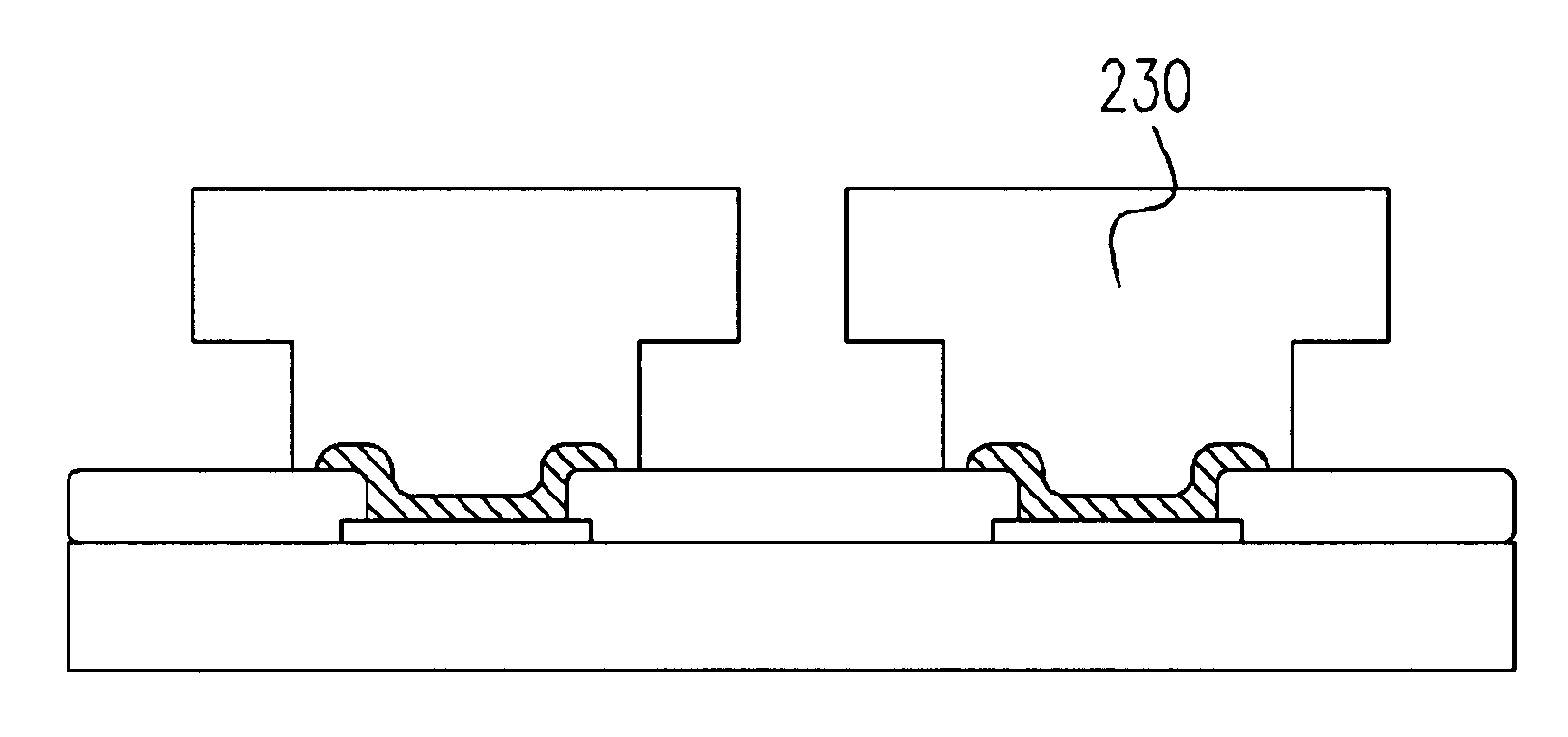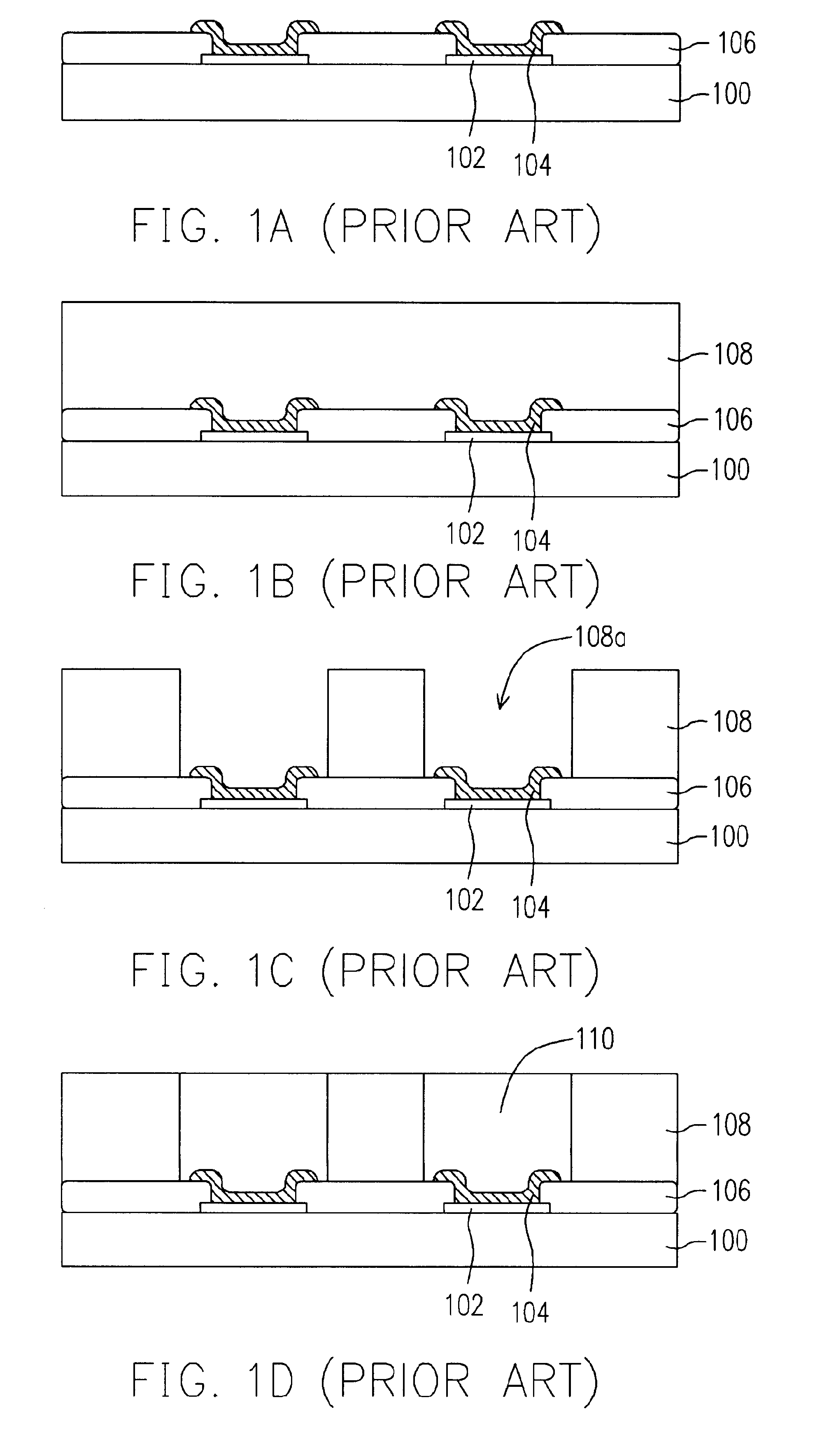Bumping process
a technology of bumping process and bumping plate, which is applied in the direction of semiconductor devices, semiconductor/solid-state device details, electrical apparatus, etc., can solve the problems of poor reliability of packages, short height the thickness of photoresist layer in the volume and height of bumps fabricated by the conventional bumping process, etc., to achieve reliable electrical and mechanical connection between chips and carriers, the effect of increasing the heigh
- Summary
- Abstract
- Description
- Claims
- Application Information
AI Technical Summary
Benefits of technology
Problems solved by technology
Method used
Image
Examples
first embodiment
The First Embodiment
[0030]FIGS. 4A to 4F are schematic cross-sectional views of a bumping process in accordance with the first embodiment of the present invention. First, referring to FIG. 4A, a wafer 310 having, for example, a plurality of bonding pads 314 and a passivation layer 316 thereon for the protection of the wafer 310. The bonding pads 314 are exposed by the passivation layer 316. In addition, each bonding pad 314, for instance, is provided with an under bump metallurgy (UBM) layer 318 formed thereon. The process of forming the UBM layer 318 comprises forming at least a metal layer by sputtering or evaporation, for example, and then patterning the metal layer. The under bump metallurgy layer 318, for example, consists of three layers, i.e., an adhesion layer / a barrier layer / a wetting layer. The adhesion layer enhances bonding between the UBM layer 318 and the bonding pad 314. The barrier layer can act to prevent mobile ions from penetrating the UBM layer 318 and dispersing...
second embodiment
The Second Embodiment
[0035]The second embodiment of the present invention discloses a method to obtain bumps with the higher height. FIGS. 5A to 5F are schematic cross-sectional views of a bumping process in accordance with the second embodiment of the present invention. Referring first to FIG. 5A, a wafer 410 is provided with a plurality of bonding pads 414, and a passivation layer 416 thereon for the protection of the wafer 410. The bonding pads 414 are exposed by the passivation layer 416. For each bonding pad 414, an under-bump-metallurgy (UBM) layer 418 is formed on the bonding pad 414.
[0036]Referring to FIG. 5B, a plurality of photoresist layers 420 is formed over the wafer 410 and covers the UBM layer 418 and the passivation layer 416. Among the photoresist layers 420, the topmost photoresist layer 420 (i.e., farthest away from the bonding pad 414), for instance, has the highest photosensitivity and the fastest development rate, while the bottommost photoresist layer (i.e., c...
PUM
 Login to View More
Login to View More Abstract
Description
Claims
Application Information
 Login to View More
Login to View More - R&D
- Intellectual Property
- Life Sciences
- Materials
- Tech Scout
- Unparalleled Data Quality
- Higher Quality Content
- 60% Fewer Hallucinations
Browse by: Latest US Patents, China's latest patents, Technical Efficacy Thesaurus, Application Domain, Technology Topic, Popular Technical Reports.
© 2025 PatSnap. All rights reserved.Legal|Privacy policy|Modern Slavery Act Transparency Statement|Sitemap|About US| Contact US: help@patsnap.com



